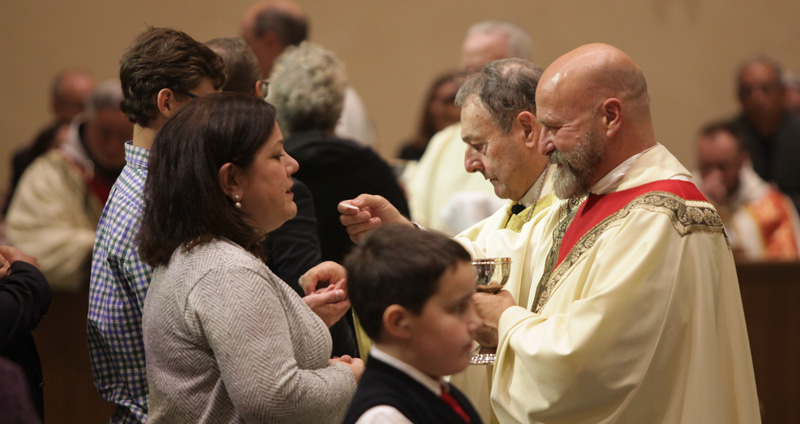
GREENVILLE—Our Lady of the Rosary Church hosted a feast day celebration for St. Kateri Tekakwitha on July 13. Sponsored by the office of Ethnic Ministries, the annual event pays tribute to St. Kateri, who was known as “Lily of the Mohawks”.
Beatified by Pope John Paul II in 1980 and canonized by Pope Benedict XVI in 2012, she is the first Native American to be canonized.
Kateri lived a life of holiness and virtue, despite obstacles and opposition within her tribe.
Born in upstate New York in 1656, her father was Mohawk and her mother an Algonquin Catholic. Her family died in a smallpox epidemic, and she was raised by an uncle.
Kateri eventually moved to Canada because members of her tribe were hostile to her faith. There she spent her days in prayer, attending Mass, and caring for the poor, elderly and sick.
She died in 1680 at the age of 24, and tradition says that after her death, her face, scarred by smallpox, became smooth and beautiful again.
Many miracles are attributed to her and passed down through stories over the generations, but the final one that assured her sainthood was a boy’s healing from a flesh-eating skin disease after he touched one of her relics.
She is now honored in four national shrines in the United States: Shrine of Our Lady of Martyrs in Auriesville, New York; National Saint Kateri Tekakwitha Shrine in Fonda, New York; The National Shrine of the Cross in the Woods in Indian River, Michigan; and the Basilica of the National Shrine of the Immaculate Conception in Washington, D.C.
St. Kateri could be joined in sainthood by Nicholas Black Elk, a Lakota Sioux medicine man born in the Civil War era. In 2017, Bishop Robert Gruss of the Diocese of Rapid City, South Dakota, secured the unanimous consent of the U.S. Conference of Catholic Bishops to begin the canonization cause for Black Elk. Officials say the process could take more than 10 years.




